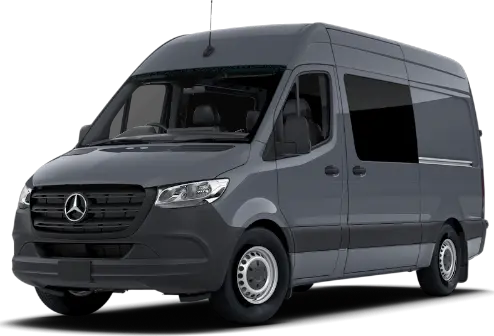Defective/ faulty oxygen sensor
The oxygen sensor that is usually called O2 sensor, is a device in the exhaust system that monitors the content of the oxygen in the gases that come out of the engine. Information from the sensor is used to determine how much fuel is needed and the proper air-to-fuel ratio for an engine to run efficiently. Oxygen sensors can be faulty or give inaccurate data because of internal corrosion or if they are contaminated with oils or silicone. Call your van mechanic to diagnose and replace an oxygen sensor if required.
Loose or damaged fuel cap
Fuel cap in your Sprinter helps to maintain the pressure inside the fuel tank. If a gas cap is damaged or loosen it will reduce your gas mileage and create more emissions from the van. If the yellow Check Engine Light turned on, immediately pull over and check your gas cup, if it is damaged then call to Sprinter Mechanic to replace a cap. If a cap is unbroken, try to tighten it up, continue driving, if yellow light is still turned on, schedule an appointment with Sprinter Repair service as soon as possible.
Worn out a catalytic converter
If your Sprinter is not moving but the engine is running, a rattling sound underneath the vehicle may indicate a failure of the catalytic converter. Sometimes the substrate – internal part of the catalyst, can loosen inside the canister of the converter, replace that part immediately. Otherwise, the substrate can break down, shrink in its size and cover the outlet pipe that will cause a sudden loss of power.
Bad Mass Airflow Sensor
MAF sensors measure the volume of air that is coming through the engine. If the sensor failed, a “Check Engine Light will be triggered, the engine will probably start to burn an excessive amount of fuel which will increase emissions and decrease gas mileage. Your vehicle may also experience misfires, loss of power, the van is stalling, fail to start. To prevent a drop in gas mileage and a frequent car stalling, diagnose and replace MAF sensor if needed as soon as possible by scheduling an appointment with Sprinter Repair service.
Bad Spark Plug
Spark plug plays a crucial part in Sprinter’s system by turning the electricity from the ignition coil into a spark. If a spark plug has failed, the Check Engine Light can appear flashing or solid. Sprinter suddenly may fail to start, lose a power, decrease in gas mileage, the engine may vibrate and experience rough idling.
Turbo Hose Update for 2007 to 2010
2007 to roughly 2010 Sprinters 2500 3500 with 3.0 engines have a lower turbo hose that can fail with time. The driver’s side hose can fail at the hose end adapter. Sometimes they will fail at the bends as well. When they do fail they can be difficult to diagnose.
They also seem to fail while under high boost. You could experience a failure while climbing a steep hill, especially on the heavy class C model RV’s. If your vehicle goes into limp mode, or you lose power under these conditions, you may have a blown turbo hose. Often you will get a check engine light with a low turbo boost code.
The good news is that Mercedes-Benz has a replacement hose that appears to be redesigned. You can purchase this hose. These are usually not a warranty item. You will need to purchase one, but be thankful it will probably not happen again for a long time. Most Sprinter shops should only stock the updated design by now. If you lay the two hoses side by side, the updated hose will have much longer bends and will be noticeably different from the shorter older hose.
There is an aftermarket repair kit that replaces the hose adapter end. You will still have an old hose and it may now be shorter since the repair kit requires trimming and you could experience failure again as things flex and boost. The repair kit is a handy emergency repair, but do yourself a favor and replace the hose with the newer designed hose.
It is fairly safe to keep driving with a blown hose. It will not cause additional damage to the turbo. You will have a severe loss in power, most likely be in limp mode, and probably experience a check engine light. As long as you don’t mind a line of traffic behind you as you travel 40 MPH, you can drive it to the next shop or safe place to stop for repair without damaging your vehicle.










